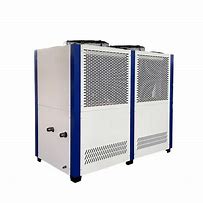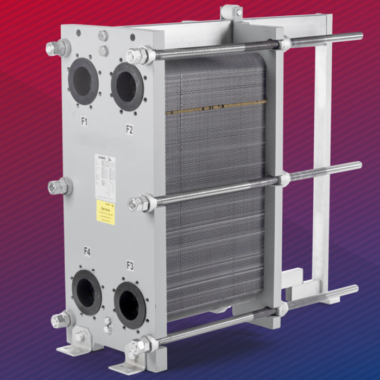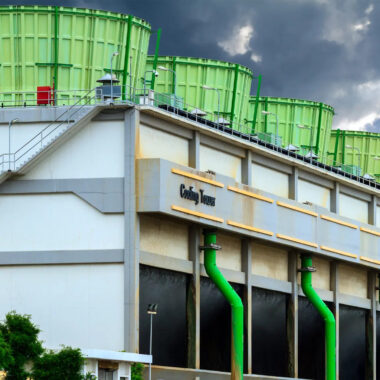Closed-Circuit Cooling Towers and Evaporative Condensers
Closed-Circuit Cooling Towers and Evaporative Condensers
Closed-circuit cooling towers and evaporative condensers indeed have specific requirements and working principles that vary from open cooling towers. Here’s a brief overview of these systems and their special considerations :
Closed-Circuit Cooling Towers:
a) Closed-circuit cooling towers, also known as closed-loop cooling towers or liquid coolers, work similarly to open cooling towers but with a closed-loop plan. In a closed-circuit system, the process fluid (such as water or glycol) circulates through a coil or heat exchanger, where it transfers heat to the ambient air.
b) Unlike open cooling towers, closed-circuit cooling towers do not specifically uncover the process fluid to the atmosphere. Instep, they use a secondary fluid, typically water, to evacuate heat from the process fluid through heat exchange.
c) Closed-circuit cooling towers are regularly used in applications where water conservation is basic or where the process liquid cannot be exposed to outside contaminants. They are commonly utilized in HVAC systems, industrial processes, data centers, and refrigeration applications.
d) Specific considerations for closed-circuit cooling towers incorporate:
1) Control of secondary liquid flow rate and temperature to optimize heat transfer efficiency.
2) Prevention of fouling and scaling within the heat exchanger coils.
3) Maintenance of proper water treatment to prevent corrosion and microbial growth.
Evaporative Condensers:
a) Evaporative condensers are heat rejection devices utilized in refrigeration and air conditioning systems to condense refrigerant vapor into fluid by rejecting heat to the encompassing air. They operate by circulating refrigerant through a coil whereas a fan draws ambient air across the coil surface, causing the refrigerant to condense and release heat.
b) Evaporative condensers utilize the latent heat of evaporation to enhance heat rejection productivity. Water is sprayed or distributed over the condenser coils, where it evaporates, absorbing heat from the refrigerant and cooling the coils.
c) These systems are commonly used in commercial refrigeration, industrial handle cooling, and air conditioning applications where efficient heat rejection is essential.
d) Specific considerations for evaporative condensers include:
1) Control of water dissemination and vanishing rates to optimize heat exchange productivity.
2) Management of water quality to prevent scale buildup and fouling on condenser coils.
3) Compliance with local regulations regarding water usage, discharge, and environmental impact.
Both closed-circuit cooling towers and evaporative condensers offer energy-efficient and environmentally friendly solutions for heat rejection in various applications. Understanding their unique requirements and operating principles is basic for designing, introducing, and maintaining these systems successfully.






